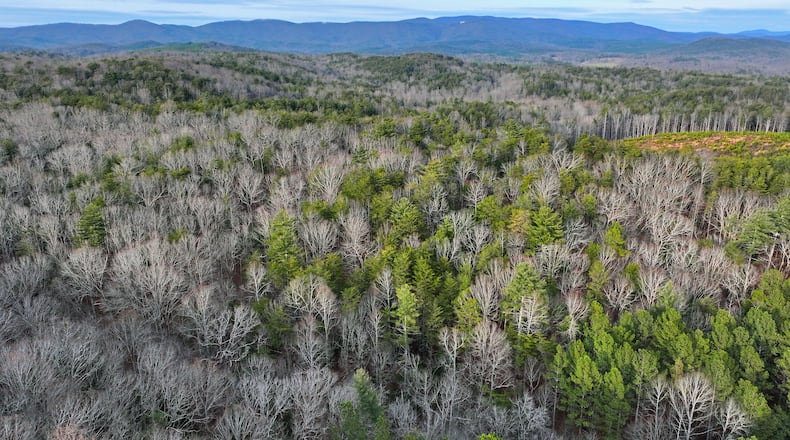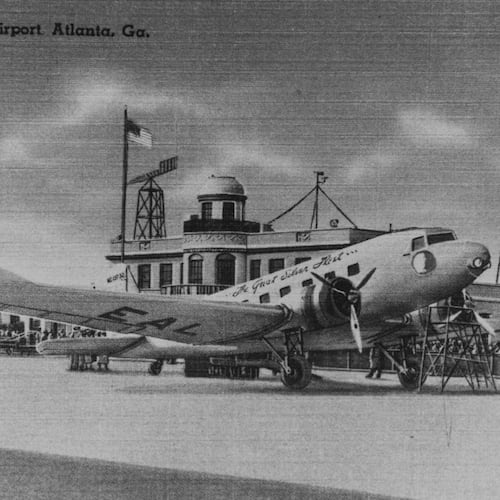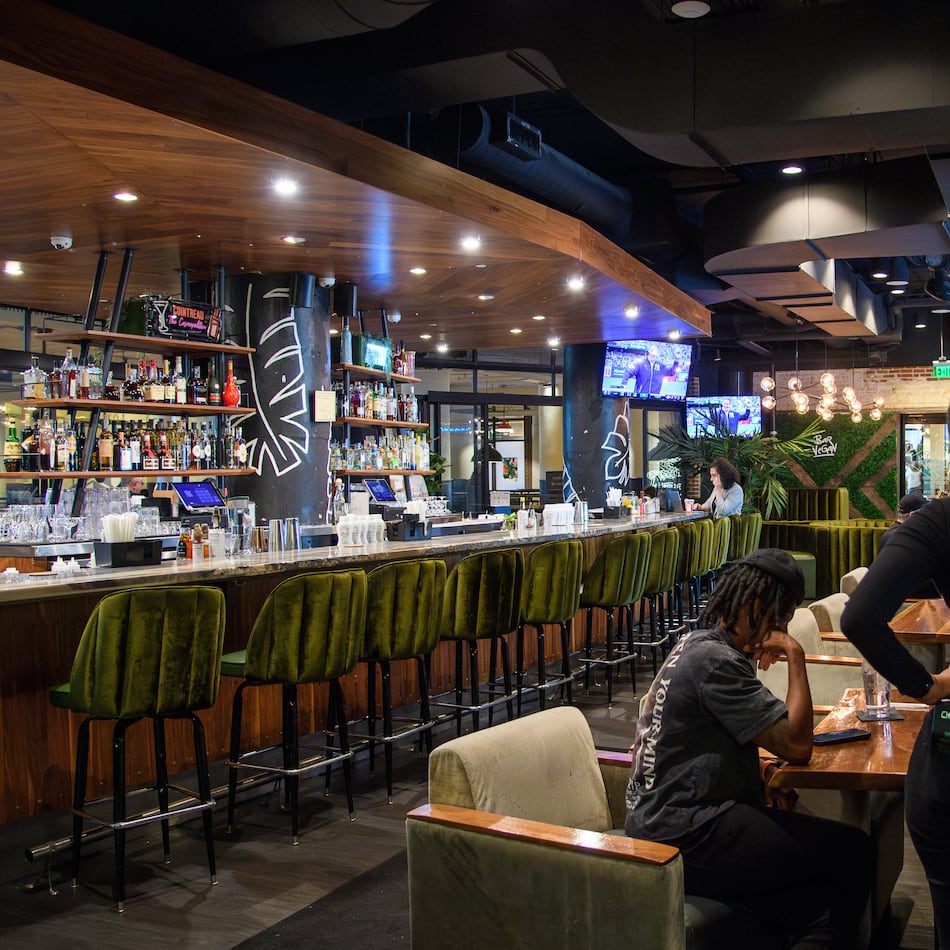In the 1970s the city of Atlanta worried it might someday need a second airport, so it bought a pair of 10,000-acre tracts of land in exurban Paulding and Dawson counties.
The two sites have been managed as public recreation land by the state since 1975 — all while the city’s interest in building that second airport evaporated.
Now, Atlanta officials have spent more than a year weighing a secret offer from the state Department of Natural Resources to purchase the properties for nearly $100 million and put them into permanent conservation, The Atlanta Journal-Constitution has learned.
In the past five decades, metro Atlanta has grown from just over 1 million people to more than 6 million, the sixth-largest metro area in the nation, while Hartsfield-Jackson International has emerged as the world’s busiest airport. Of the country’s top 10 metropolitan statistical areas, Atlanta is the largest with only one commercial airport.
The discussion about retaining the land or selling the tracts for conservation could have huge ramifications for the future of the region’s green space, as there are no tracts of forest this large left in the metro area, per proposal documents. But a sale would also dramatically decrease the city’s landholdings and its chances of ever building something at the scale of another commercial airport.
The decision, Mayor Andre Dickens told the AJC, is a “complicated matter. It’s one of 100 years or more consequence.”
“We made a wise decision to purchase them 50 years ago,” he said. “So I have to make a wise, critical decision on determining what’s the next step. I’m not ready to make that decision just yet. We are still analyzing.”
Plans in recent years to develop additional commercial airports have gone nowhere, folding under opposition from nearby communities, as well as pressure from the city and Delta Air Lines, which operates its fortress hub here. A city study of possible second airports in 2011 found no financially feasible sites, including these two forests.
The behind-the-scenes push to lock them into permanent conservation has been “motivated by a desire to ensure perpetual protection for the land and recreational access to the public,” Wildlife Resources Division spokesperson Kaitlin Goode said.
Regardless, she said, the Department of Natural Resources is committed to continuing to manage them and confirmed “the public will see no change in their ability to recreate on them.”
But it might be too late for the city to capitalize on the natural resources department’s recent offer, at least in its current form.
The federal grant that it hinged on is stalled after a recent executive order from President Donald Trump paused all grants and loans. A federal judge blocked it, but the White House is still keeping some spending on hold.
Large tracts of forest in the sprawling metro are exceedingly rare and prime targets for conservation. The Department of Natural Resources already lost access to one Wildlife Management Area it had leased for 50 years in Bartow County, after its owner decided to pursue potential development.
The Atlanta airport itself in 2015 explored developing these forests in an effort to pull in more revenue, though those plans fizzled.
Credit: Emma Hurt
Credit: Emma Hurt
The pitch
According to emails obtained by the AJC through the Georgia Open Records Act, the impetus for the recent proposal had been the chance to win nearly $50 million in federal grants funded through former President Joe Biden’s signature climate and health bill, the Inflation Reduction Act.
The law temporarily more than doubled the funding available to the federal Forest Legacy program.
Combining that windfall with other grants, philanthropy and $30 million in state funds would add up to about $95 million for both tracts, on par with the Department of Natural Resources’ appraisal of the properties, according to a proposal document.
The plan was put together by The Conservation Fund, which often works with the city and state as a conduit for land conservation deals. The nonprofit declined to comment.
In emails to city staffers, the fund’s Georgia director, Stacy Funderburke, emphasized that it would be “almost impossible” to put together a similar deal without the federal cash.
“There are few moments in the State and City’s history where there could be enough alignment in leadership to achieve this signature conservation outcome,” he wrote.
“This would be a nationally important conservation transaction — the City and the State choosing to do the right thing, coming together to conserve almost 20,000 acres of forest within such close proximity to Atlanta.”
The Paulding site sits 45 miles west-northwest of downtown Atlanta; the Dawson Forest lies more than 60 miles north.
Credit: HYOSUB SHIN / AJC
Credit: HYOSUB SHIN / AJC
A briefing document pointed out that North Georgia is “one of the fastest developing areas of the country. … As development pressure grows, the chances that these properties could be fragmented and sold for development in the future are significant.”
The deadline to apply for the grant is in March, but it was “critical” that the mayor decide about moving forward by the end of 2024, Funderburke wrote last fall.
As an added complication, Trump’s recent executive orders means the entire program is in limbo, the Georgia Forestry Commission said.
Even if it’s not through this grant, however, the Department of Natural Resources told the AJC it “remains committed” to working with the city to “find a way to conserve these properties.”
The state, for instance, sits on more than $16 billion in reserves, and other funding sources like private philanthropy could emerge.
What the city might do with proceeds of a theoretical sale, regardless of funding structure, is a big question. Any money Atlanta could ever make from the sale of these tracts cannot go to the general fund.
The land is owned by the city’s Department of Aviation, and federal laws require all money made by an airport must remain at that airport. Those regulations are designed to protect the billions in federal dollars that have been spent on the country’s airports from local officials who may try to dip into airport revenues for other purposes.
Credit: Emma Hurt
Credit: Emma Hurt
Harvey Newman, a professor emeritus of public administration at Georgia State University and veteran of the city’s urban design commission, said he couldn’t think of “many compelling reasons why the city should hold it if it’s going to be conserved,” since the sites have been deemed not viable for airport expansion.
But the complication of revenues having to stay in the airport budget might be one good reason, he said, “if the money can’t be utilized for anything else other than airport development.”
Credit: Atlanta Journal and Constitution
Credit: Atlanta Journal and Constitution
Planning ‘for the jet age’
Talks about the possible need for a second Atlanta airport date to the mid-1960s. Some leaders warned the city needed to plan “for the jet age,” according to a 1974 Atlanta Journal and Constitution Magazine article by Margaret Shannon.
A study identified possible sites in north Fulton, Gwinnett and Henry counties, but the city ended up buying the Dawson and Paulding tracts in two transactions during the tenures of mayors Sam Massell and Maynard Jackson.
Atlanta wasn’t alone.
A separate 1974 Atlanta Constitution article quotes the director of the Dallas-Fort Worth airport urging his Atlanta counterparts to “buy early!” when it came to a second airport site.
But ironically, the first parcel the airport purchased was more the case of an “eager buyer and eager seller,” Shannon wrote, rather than city officials being motivated “by grandiose visions of Atlanta as the world’s next great city.”
Credit: HYOSUB SHIN / AJC
Credit: HYOSUB SHIN / AJC
The then-Lockheed-Georgia Co. had been using the Dawson forest as a test site for nuclear-powered aircraft via a government contract. After the “Georgia Nuclear Aircraft Laboratory” closed, Lockheed was desperate to sell.
(Georgia EPD has today deemed the site safe from radiation risk, state lands forester Tony Page, who oversees the sites, told the AJC.)
Few in the 1970s actually thought the property could become an airport anytime soon given its distance from downtown, but the city got a deal: $5.3 million for land that was worth $11 million two years later, then-city finance director Charles Davis told the magazine. ($5.3 million today is around $34 million.)
“You’ll never again assemble 11,000 acres all in one tract and clear of residents in 45 miles of Atlanta,” he said presciently of the Dawson tract.
But the second airport chatter continued, and Paulding became a focus over objections of some residents. Famed Atlanta developer Tom Cousins saw the opportunity to put together the acreage. By one estimate the property was worth around $8.5 million, or about $54 million today.
Credit: Emma Hurt
Credit: Emma Hurt
Back then, Delta was on board with the Paulding plan: putting out a 1973 statement saying it hoped Cousins and the city could work out a plan to “solve the Atlanta metropolitan area’s air transportation dilemma.”
In 1975 after acquiring both, Atlanta entered an agreement with the Department of Natural Resources and the Georgia Forestry Commission to manage them because of issues with dumping and trespassing, Page said.
Since then, they’ve been “working forests” that are open to recreation as Wildlife Management Areas, he said. Both are also especially valuable because they abut other state-managed land, he said, making them part of larger wildlife corridors.
The Dawson site has a trail system popular with hikers, horseback riders and mountain bikers; a day pass costs $7. Paulding gets more use from bird watchers and hunters, especially during fall deer season, Page said.
“These properties are unique,” he said. “They’ve been maintained and managed as a green space for a long time. Unfortunately, there’s not very many tracts like that.”
And they’re getting more and more use, he said, especially at Dawson given the growth around Ga. 400.
Credit: JOHN SPINK / AJC
Credit: JOHN SPINK / AJC
Airport dreams stay ‘up in the air’
While the forests have remained untouched by Atlanta’s sprawl, interest in a second airport by the city and Delta in the last five decades has disappeared. While most of the country’s other big metro areas like New York, Chicago and Dallas have multiple airports, Atlanta has resisted.
That’s in part because the airline industry has consolidated, and there is now only one airline hub in Atlanta: Delta’s.
Some other cities with more than one airport have multiple airline hubs. Delta, however, makes up about 80% of the market in Atlanta compared to all other airlines’ single digits.
City and Delta officials have warned that a second airport would divert airline resources and passenger volume, thereby threatening the hub and the “world’s busiest” title Atlanta earned in 1998.
In 1974, Atlanta’s CFO Davis called the airport the “largest single economic generator in the Southeast” with its approximately $25 million in annual revenue. Delta represented about 44% of its volume.
That “generator” has only grown. Hartsfield-Jackson today touts its status as “the economic jewel of Georgia” with a $316 million budget.
The airline and the city have repeatedly quashed any threats to Hartsfield’s dominance, even as a fast-growing northern Atlanta metro population bemoans their airport commute.
The most recent second airport push came from Paulding County’s own government, which planned to convert its tiny general aviation airfield, which is surrounded by the city’s forest tract, into a commercial one.
Credit: John Spink
Credit: John Spink
Delta quietly funded a campaign against the move.
In a 2014 op-ed, then-city of Atlanta CFO Michael Geisler said a second airport in Paulding would “damage” the region by diverting passengers and revenues away from its self-proclaimed crown jewel.
Similarly, when some state lawmakers, including now-Lt. Gov. Burt Jones, threatened to pass legislation to take over governance of Hartsfield-Jackson in 2019, Delta and the city mobilized to stop the effort.
But ATL’s hallowed status is also baked into the city’s latest lease agreement with Delta.
In exchange for Delta’s promise to keep its headquarters here until 2036, Atlanta vows that it “does not currently plan to and will not own or operate any other commercial service airport.” A 2024 federal law also includes a provision from Sen. Raphael Warnock to prevent more hostile airport takeovers.
As Shannon put it in 1974: “The question of Atlanta’s second airport … has a way of staying up in the air.”
About the Author
Keep Reading
The Latest
Featured









